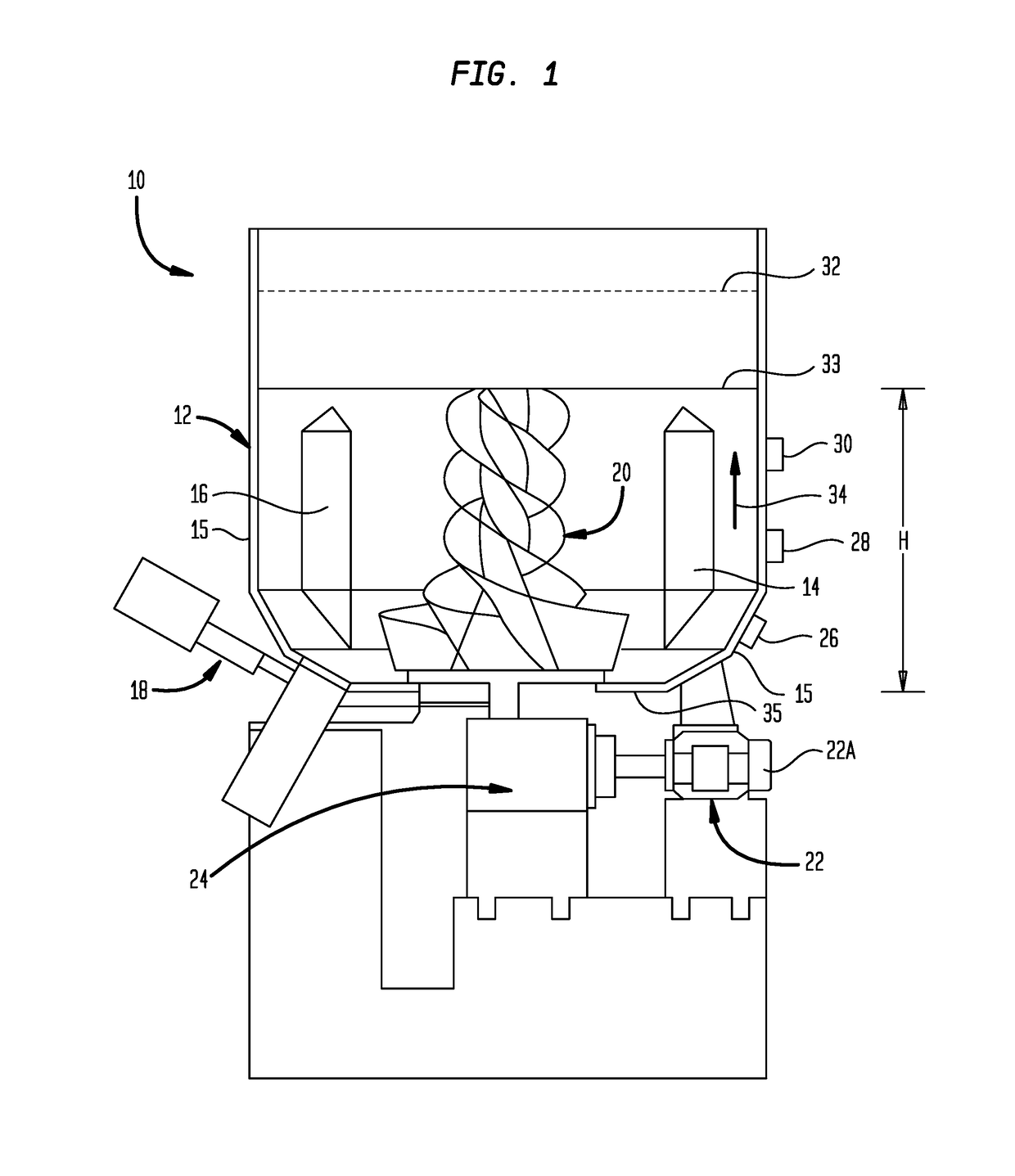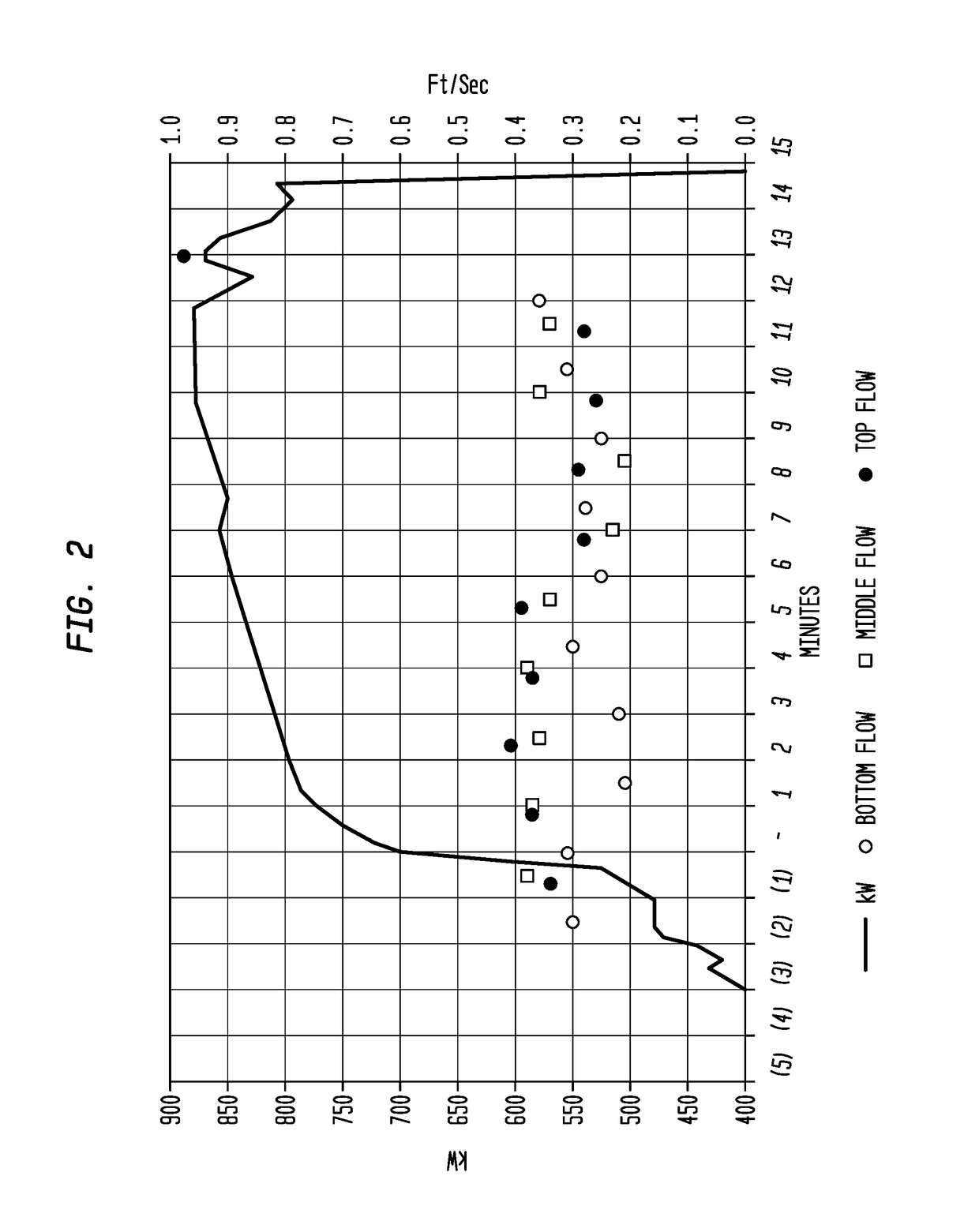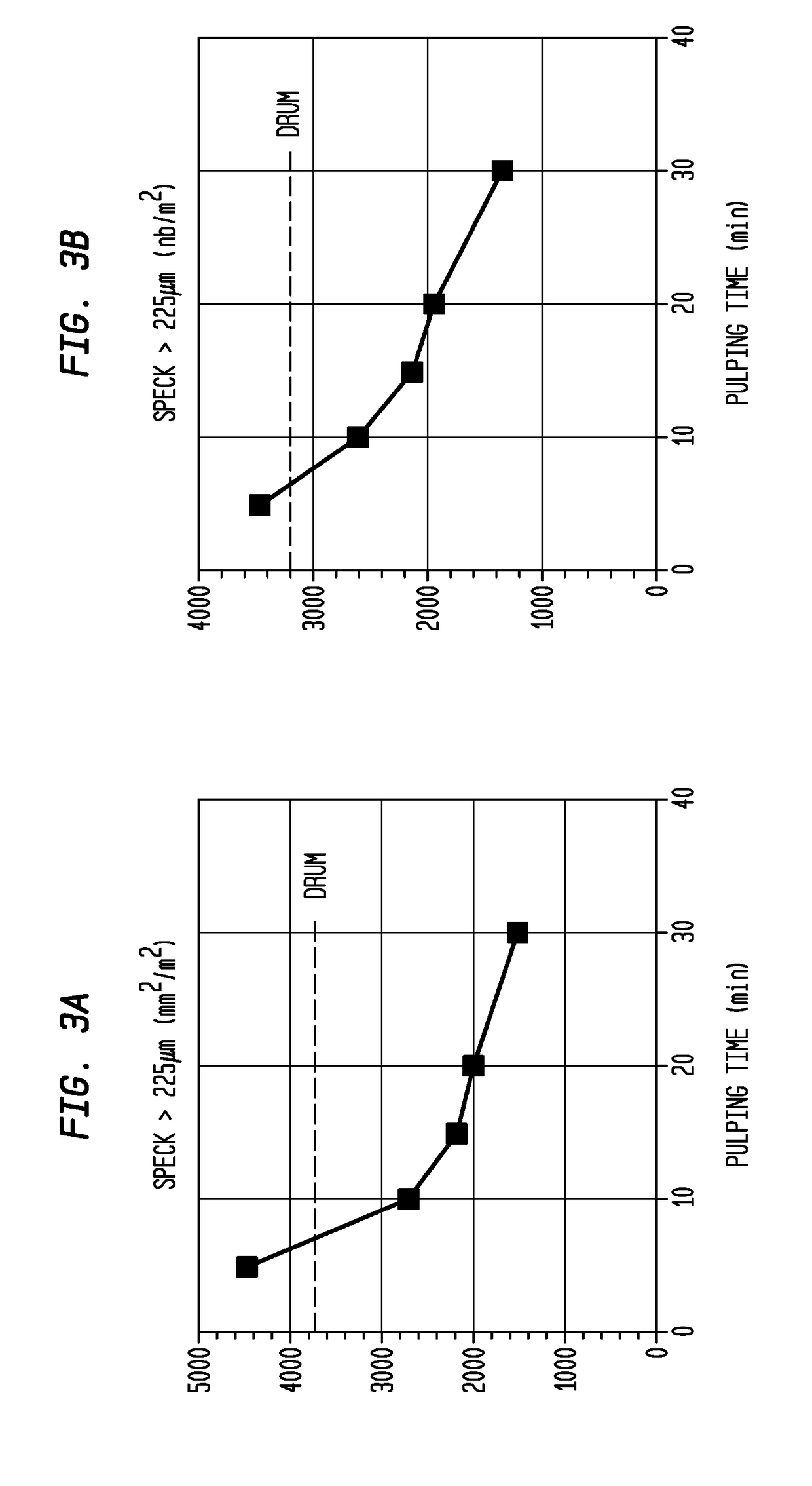High Consistency Re-Pulping Method, Apparatus and Absorbent Products Incorporating Recycled Fiber
a technology of re-pulping and fiber, which is applied in the field of high consistency re-pulping method, absorbent products incorporating recycled fiber, can solve the problems of difficult separation in a de-inking system, adversely affecting the brightness of finished pulp, and smearing of ink, so as to increase the viscosity, increase the viscosity, and increase the viscosity
- Summary
- Abstract
- Description
- Claims
- Application Information
AI Technical Summary
Benefits of technology
Problems solved by technology
Method used
Image
Examples
embodiment
[0166]Embodiment No. 3 is the method No. 2, wherein the pulping vessel is provided with a plurality of ultrasonic Doppler flow sensors.
[0167]Embodiment No. 4 is the method according to Embodiment No. 3, wherein the pulping vessel has a fill height, H, above a bottom of the pulping vessel and a first ultrasonic Doppler flow sensor disposed at a height of from 10-20% of height, H, a second ultrasonic Doppler flow sensor disposed at a height of from 40-60% of height, H, as well as a third ultrasonic Doppler flow sensor disposed at a height of from 70-90% of height, H.
[0168]Embodiment No. 5 is the method according to any one of the foregoing Embodiments, wherein the lower threshold flow value is 0.05 ft / sec or above.
[0169]Embodiment No. 6 is the method according to Embodiment No. 5, wherein the lower threshold flow value is 0.1 ft / sec or above.
[0170]Embodiment No. 7 is the method according to any one of Embodiment Nos. 1-6, wherein the lower threshold flow value is from 0.05 ft / sec to ...
PUM
| Property | Measurement | Unit |
|---|---|---|
| threshold slurry flow | aaaaa | aaaaa |
| length | aaaaa | aaaaa |
| length | aaaaa | aaaaa |
Abstract
Description
Claims
Application Information
 Login to View More
Login to View More - R&D
- Intellectual Property
- Life Sciences
- Materials
- Tech Scout
- Unparalleled Data Quality
- Higher Quality Content
- 60% Fewer Hallucinations
Browse by: Latest US Patents, China's latest patents, Technical Efficacy Thesaurus, Application Domain, Technology Topic, Popular Technical Reports.
© 2025 PatSnap. All rights reserved.Legal|Privacy policy|Modern Slavery Act Transparency Statement|Sitemap|About US| Contact US: help@patsnap.com



